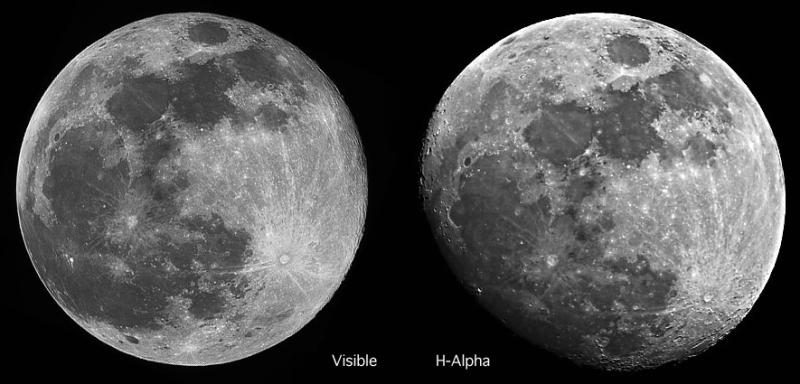H-Alpha Moon

Explanation:
Most images of the Moon are taken in visible light, which is where
human eyes are most sensitive. But here (right) is one taken through a hydrogen-alpha
filter which is normally used to image the Sun in a narrow red part (656.3 nm) of
the visible spectrum. I compare this image to Frank's previous LPOD
(and APOD!) image on
the left which was taken in visible light. I enhanced both images, making comparison
a little uncertain. Nevertheless, there are a few interesting comparisons. first,
the two images look quite similar - probably because the Sun is quite bright at H-alpha
wavelengths, contributing significantly to its total visible brightness. Second,
there are some differences. In H-alpha, Mare Nectaris is more muted - the rays that
cross it are more strongly depicted. The same seems true for maria Fecunditatis and
Crisium - both are low in titanium. Additionally, the dark mare patches south of
Mare Serenitatis have more contrast on the H-alpha image. Frank's image suggests
that amateurs may want to experiment imaging the Moon thru different color filters
to explore compositional differences in the maria.
—
Chuck
Wood
Technical Details:
Right image: Sept 25, 2004. Orion 80 mm ED + SBIG ST7E camera + Schuler 10nm H-alpha
filter. Mosaic of two 110 ms exposures. CAW ehhanced with unsharp mask. Left image:
Dec 9, 2003. Celestron C8 SCT with a SBIG ST-7E ccd camera and an Orion Moon Filter
to capture 18 frames at 110 ms each which were mosaicked into this image.
Related Links:
Frank's Celestial
Wonders
